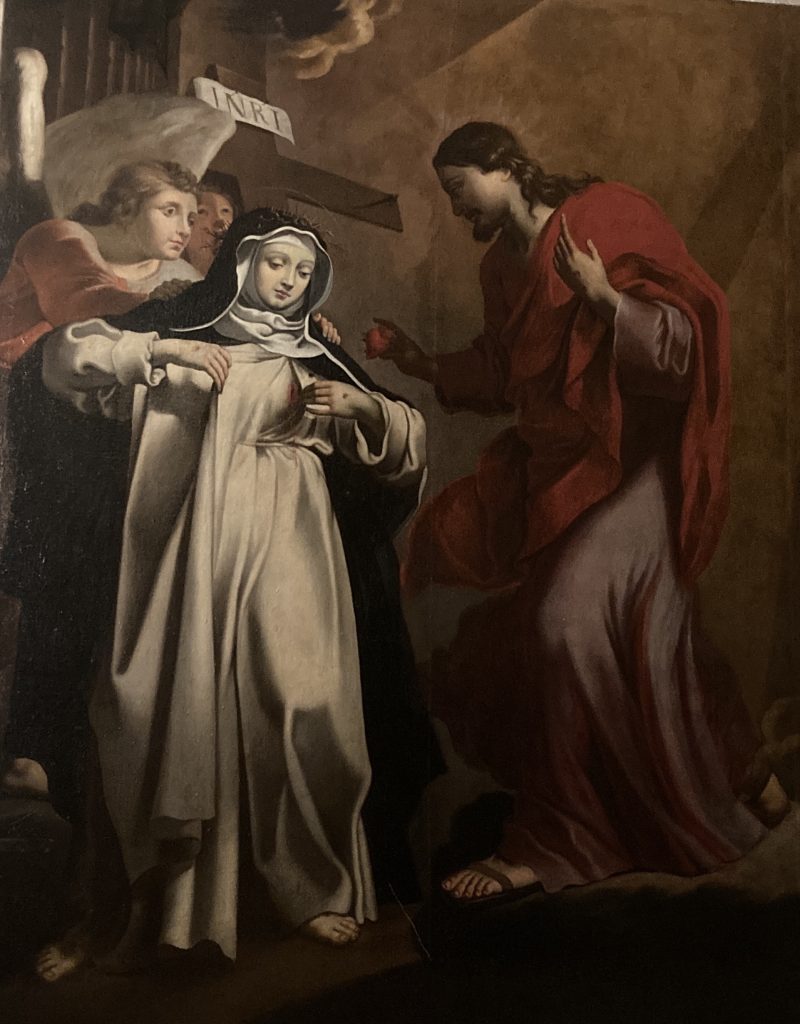 On one occasion, praying even more fervently than usual, she used the words of the Prophet: «Create a clean heart in me, O God, and renew a right spirit within me,» intending in this way to ask the Lord particularly to take from her completely her own heart and her own will. His answer was to fortify her resolution by a vision. Coming to her in the now accustomed way, he seemed to open her left side, take out her heart, and carry it away. the vision was so realistic, and so confirmed by the evidence of her own physical condition, that when she went to confession afterwards she told her confessor that she no longer had a heart within her breast. He only laughed at this, and then seriously took her to task for saying such a thing. But she emphatically repeated it, saying: «It is a fact, Father. As far as I can judge from what I feel in my body, I seem no longer to have any heart in it. Our Lord appeared to me, opened my left side, took out my heart, and went away with it.» But her confessor brusquely said she could not possibly live without her heart. To this she replied that «no thing is impossible with God,» and that she was herself convincd that her heart was now missing. And in the days that followed she said several times over that she was living now without her heart.
On one occasion, praying even more fervently than usual, she used the words of the Prophet: «Create a clean heart in me, O God, and renew a right spirit within me,» intending in this way to ask the Lord particularly to take from her completely her own heart and her own will. His answer was to fortify her resolution by a vision. Coming to her in the now accustomed way, he seemed to open her left side, take out her heart, and carry it away. the vision was so realistic, and so confirmed by the evidence of her own physical condition, that when she went to confession afterwards she told her confessor that she no longer had a heart within her breast. He only laughed at this, and then seriously took her to task for saying such a thing. But she emphatically repeated it, saying: «It is a fact, Father. As far as I can judge from what I feel in my body, I seem no longer to have any heart in it. Our Lord appeared to me, opened my left side, took out my heart, and went away with it.» But her confessor brusquely said she could not possibly live without her heart. To this she replied that «no thing is impossible with God,» and that she was herself convincd that her heart was now missing. And in the days that followed she said several times over that she was living now without her heart.
Some days later, it happenend that she was with the other Sisters of Penance of Saint Dominic in a certain chapel of the church of the Dominican Friars in Siena, which still serves as their meeting-place. She remained behind, after the others, absorbed in prayer. Returning to herself at last from the state of trance whcih had now become habitual with her, she rose to her feet and prepared to return home. Suddenly a light from heaven shone round about her. In the midst of the light our Lord appeared, bearing in his sacred hands a human heart, ruby in colour and ablaze with light. All a-tremble at the dazzling advent of her Creator, she fell to the ground. Our Lord approached her, opened her left side once more, and placed within it the heart which he was carrying. «See, dearest daughter,» he said, «a few days ago I took your heart from you; now, in the same way, I give you my own heart. For the futur, it is by it that you must live.» With these words he closed up the opening he had made in her side, and made it fast. But a sign of this miracle ever afterwards remained in the form of a scar on her side at that spot. Her women companions informed myself and many others that they had often seen the scar. And when in the course of my duty I questioned her closely about it, she could not deny its existence and acknowledged it as a fact. Moreover, she volunteered the information that from that time forward, she found herself unable any longer to say, as had been her won, «Lord, I commend to your care this heart of mine.»
(Raymond of Capua, Life of Catherine of Siena 179–180)